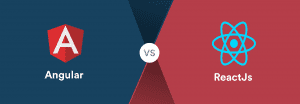Laravel vs Spring- 9 Crucial Differences to Decide a Backend Framework
Over the years, these are some of the most often questions we’ve been asked:
- Is there any benefit of choosing PHP-based Laravel over Java-based Spring framework?
- What would be the ideal comparison of Laravel vs Spring?
- Which is a better backend technology: PHP or Java?
Laravel vs Spring compares two popular frameworks from different backend programming languages: PHP and Java. For CTOs and web application owners to make an informed decision, the comparison includes crucial aspects needed to decide a project framework.
Editor’s note: In this article, Hiren will help you make the right call by studying the pros, cons, use cases, performance aspects. Moreover, He will be answering the questions that put our fellow CTOs in a dilemma of pursuing a better framework. If you need outsourced assistance for your project, feel free to check out Simform’s web application development services.
What is Laravel?
Laravel is an open-sourced web framework known for its server-side handling of routing, HTML authentication, templating, and more. Created by Taylor Otwell, Laravel is written in PHP and is based on Symfony that provides reusable PHP components/libraries. Since it is a server-side-based framework, with Laravel, you can build applications with pre-defined architectures, customized backend logic, web portal, templates, and full-stack apps as well as manage SaaS products.
Market usage stats of Laravel
- Laravel holds 0.16% of the market share among all the web frameworks that exist today.
- The number of live websites using Laravel has risen above 685,868 with over 1.94% (one million) websites based in the US region.
- Laravel has 73k Github stars with 22.5k forks and 608 dedicated contributors who improve the real-time framework.
Use cases of Laravel
- SaaS-based web applications
- On-demand streaming web apps
- e-Learning web apps
- Stock trading based web management systems
- Web apps with rewards and recognition features
- Multilingual CMS systems
- Self-hosted website-performance monitoring apps
Popular apps using Laravel as backend technology
- Laracasts, a e-learning website, offers various courses and serves as a platform where technical queries are answered and resolved by experts.
- Barchart, a financial portal, gained an advantage of the latest global market data in stock, currency exchange, trade offers, gold price, and more.
- Asgard CMS, a modular multilingual CMS, provides futuristic ready-to-use modules such as dashboard, media management, and flexible back-end support.
- World Walking, a charity led healthcare platform, focuses on provoking people to do more walking by offering rewards and recognition programs.
- Neighborhood Lender uses Laravel as the backend support to serve as a mortgage calculator with a wide range of financial functionalities, making complex mortgage processes more comfortable and straightforward.
What is Spring?
Spring is an open-source and lightweight framework for creating modern Java-based enterprise applications. It provides infrastructural support that focuses on business logic at the application level. The term “Spring” refers to a group of modules or projects such as Spring Boot and Spring Cloud, which is also called Spring Family. The Spring framework, for one, is a module/project of this group.
Spring creates a safe environment for programming in Java. As a matter of fact, all of its modules and frameworks are optimized to deliver desired performance, streamlined development experience, and security.
Market Usage Statistics
- Spring is one of of the most used framework among developers, say 14.56% in 2021 as per statista report
- 86% respondents reported Spring being used as their Java application framework in their main projects, according to the Java Technology Report.
- Spring framework has 47.5K stars on Github and 196,790 questions on Stackoverflow.
Use cases
- Restful Services
- Enterprise-grade applications
- Complex web applications and long-running tasks
- Web-based and stateful applications
Popular Apps Built Using Spring
- Etermax Data Science improved the quality of their application and solved complex problems related to large codebases.
- Houghton Mifflin Harcourt used Spring Boot’s production-ready features to develop microservices.
- Spotify used Spring Boot to build their microservices as it offers great flexibility in choosing components within any given method.
- Netflix used Spring Boot’s built-in Kafka consumers called Spring Kafka Connectors to implement “consuming microservices” and establish seamless connectivity between annotations and deserialization of data.
Laravel vs Spring- Pros and Cons
Before you choose a framework, it’s important that you understand the opportunities and shortcomings it brings along. This comparison between Laravel and Spring should help you select the most compatible tool for your application.
Pros of Laravel
Pre-packaged tools: Facilitates common tasks required for building web applications by offering ready-to-use packages for user authentication, testing APIs.
Templating system: Uses a templating engine known as Blade, which offers enormous power to format data and create complex web-app layouts with easy navigation. It allows the addition of new modules and features without making any change in the core.
Automation with Artisan CLI: Offers the ability to automate any kind of recurring task which is application-specific. It generates modern boilerplate codes to manage databases, migrations, and implement custom commands conveniently.
Routing: Reverse routing is a unique feature that supports the automatic propagation of changes in routes into relevant links. In other words, it automatically creates Uniform Resource Identifiers (URIs).
Automated testing: Offers expressive testing methods with PHPUnit that simulates user behavior by making requests to the application’s functions. This way, testing is less time-consuming and automated.
Cons of Laravel
Lightweight: Typically, the lightweight feature of this framework is considered an advantage, but in this framework, the lightweight nature leads to excessive backend congestion of database queries, ultimately leading to lower performance with an increase in data congestion.
Library quality: While Laravel might be open-sourced and backed by a vast community, it also leads to an increase in less reliable third-party libraries.
Community: Since the Laravel community is considerably large, the number of third-party libraries built and published is significant. It becomes difficult to evaluate which library is reliable and quality certified.
Pros of Spring
- Increases productivity and efficiency of the development team by significantly reducing the development time.
- Extends flexibility in configuring Java Beans, Database integrations, and XML configurations.
- Offers modularity to developers by letting them choose suitable packages and classes as per the project needs.
- Simplifies injecting of test data; hence, it is super efficient in providing testability.
- Offers suitable compilation units for unit and integration testing of applications.
Cons of Spring
- Requires senior-level development experience to decide variables and set-up since it offers a rich ecosystem of many classes and tools.
- Demands XML expertise from anybody working with the Spring framework.
- Lacking security-related guidelines for cross-site request forgery or XSS. This creates a hectic situation for developers who want to build the utmost secure apps.
Laravel vs Spring- Performance & Speed Comparison
While performance should not be a killer factor for small projects, it becomes extremely important to consider it when building complex and large projects. With that being said, let’s compare Laravel and Spring in terms of performance.
How does Laravel stand out in terms of performance?
The performance of Laravel-based applications can have implications on the success of a project, and it is said to be slow. But, its community suggests that it can be improved for better performance if optimized appropriately, which may allow applications to perform efficiently even under 20ms.
Usage of Cache tags allow applications to quickly load the pre-stored information that allows a faster response time, leading to improved performance.
How does Spring stand out in terms of performance?
Spring framework delivers high-performing applications. It is mainly because of the Spring MVC module that clarifies the difference between app’s model, view, and controller to further reduce the complexity among multiple app modules, especially in larger apps. The framework loads classes as features being used in the application, which ultimately increases the app performance.
Further, the framework’s flexibility to build almost any application as developers want allows developers to use a comprehensive set of libraries and tools. Plus, the optimized startup time and heap usage make Spring apps more user-friendly.
Lastly, the framework uses the fastest servers like Tomcat and Netty that enhances application performance.
Laravel vs Spring- Application architecture
When choosing a framework, it’s important to choose flexibility and avoid any strict enforcement of architecture and guidelines. As a matter of fact, it’s always recommended to treat a framework as a guide, not methods and standards. That said, let’s juxtapose Laravel and Spring with each other and check whether they are flexible in terms of architecture.
What kind of architecture does Laravel support?
Laravel follows the Model-View-Controller (MVC) architectural pattern that provides the ability to split developer roles for a more comfortable development process. In other words, while a frontend developer is working on the views, a backend developer can be working on the controller logic simultaneously.
The MVC patterns also offer full control over the application, which might come in handy to choose application-specific routes and customize how your application appears on a global scale. This improves the SEO of the application in return as well. Implementing external APIs and reusing application logic is effortless with Laravel’s MVC architecture. Thus, the creation of immutable backend support for any web application is always possible.
What kinds of architecture does Spring support?
The architecture of the Spring framework supports high-end modularity with four internal modules:
i) Core Container offers fundamental parts of the framework including dependency injection, Bean module, Expression Language module, and more.
ii) Data Integration contains JDBC module for database connectivity and Java Messaging Services module, Spring Transaction Management module, and more. All these data access modules remove boilerplate coding for data access and direct implementation. Also, they establish seamless coordination between Java objects.
iii) Web Container consists of various web modules like Web MVC and Web Socket to develop web applications, multiple file uploading functions, and more.
iv) Miscellaneous contains Aspect-Oriented Programming, Testing, Messaging, and other modules that support integration tests, unit tests and address crucial integrations.
The Spring framework architecture addresses common problems in enterprise edition Java. What makes it a compelling tool is that it enables developers to build classic business applications due to its modular and object managing capabilities. What’s more, the architecture improves productivity and remarkably reduces unexpected errors.
Laravel vs Spring- Scalability
Frameworks significantly influence the web application scalability, therefore, the right choice of framework is important. Here’s how Laravel and Spring stand out in terms of scalability.
Is Laravel scalable?
Popular apps using Laravel for years are scaling up their applications without any limitation. Laravel inherits scalability from PHP as it proffers support to rapidly growing businesses. By choosing a good database and load balancer, Laravel can achieve massive horizontal scaling.
Laravel applications can be scaled as per requirement by using MySQL, AWS and some advanced caching methods.
How scalable is Spring?
With Spring, you can build scalable applications as it’s flexible and has parallel processing capabilities. The latter enables Spring apps to execute requests faster and significantly reduces app downtime despite newly added functionalities. What’s more, the framework is highly configurable and performant.
Comparing Nodejs vs Java: Your Backend Tech Stacks Explained
Laravel vs Spring- Ease of Testing
To be able to work without a glitch under continuous, high load and growing market expectations, your application development project needs to go through a series of tests to ensure compliance with the UI standards, compatibility and usability. Here’s how Laravel and Spring stand out when compared with testing.
How easier is it to test a Laravel app?
Given the fact that Laravel functions with PHP, there are many testing tools available to ensure the creation of a bug-free application. However, it is understandable to feel overwhelmed by the number of tools and resources available for testing. To make the testing process more comfortable, Laravel tests code in two distinct levels known as Unit tests and Feature tests.
Laravel, by default, has a robust testing documentation and provides all the tools you need to test the application environment at several levels, including the ability to conduct mock tests by mocking application codes and events.
How easier is it to test Spring applications?
Since the framework is preferred for building enterprise-grade apps, it extensively supports testing whether it’s unit testing or integration testing.
The testing ecosystem includes Mock objects like JNDI and Servlet API for testing isolated codes. Testing in Spring also supports unit testing and integration testing using support classes like Spring MVC Testing Utilities and JDBC testing support, and many other testing types.
Laravel vs Spring- Microservices compatibility
A framework, such as backend, should support microservices architecture. With microservices, multiple teams work on independent services, enabling you to deploy more quickly — and pivot more easily when you need to. With that said, let’s see whether Laravel and Spring support microservice architecture.
Is Laravel compatible with microservices architecture?
PHP supports microservices architecture, and it is evident that Laravel supports microservices architecture as well. How does Laravel do it? The app is broken down modularly into small building blocks, each with its function and responsibility. These functions communicate with each other using language-agnostic APIs, and as a result, the app becomes compatible with the microservices architecture.
For the past few months, the need to use Laravel with microservices architecture was so intense that a developer came up with a framework – Lumen. It serves a similar purpose and is a leaner, smaller, and lighter version of Laravel.
Is Spring compatible with Microservices architecture?
Spring has a separate module for building microservices known as Spring Boot that’s different from the Spring framework. It specializes in configuring external components and monitoring multiple components at a time. It eliminates configuration challenges associated with microservices and provides a compatible environment for microservices development.
Laravel vs Spring- Database support
Using a database is always better than using a key-value store or a local file to store and handle larger amounts of data. Choosing the right database and framework will ensure faster code inserts and processing of updates than the local storage alternatives.
How good is the database support for Laravel?
Laravel currently supports four database system types: Postgres, MySQL, SQLite, and SQL. The fluent query builder, raw SQL, and Eloquent ORM make the process of interacting with these databases simple. Even establishing multiple database connections is more comfortable to configure with Laravel.
Whether other databases will support Laravel, only the future can tell. But say, you are comfortable with the databases that Laravel supports, you will face no limitations in creating a wholly controlled relationship between the database and the web app.
How good is the database-support for Spring?
Spring framework offers a compatible environment to interact with database technologies like Object Relational Mapping and NoSQL databases. It extends its support for SQL databases using JDBC connectivity.
Developers can choose from a plethora of alternatives to develop production-ready Java apps with uninterrupted database connectivity since Spring accommodates data access technologies effortlessly.
Furthermore, Spring Data is a separate module from the Spring Family that reduces boilerplate codes and provides a default implementation for repository interfaces in database integration.
Laravel vs CodeIgniter: Comparing two PHP frameworks on the basics of web app development
Laravel vs Spring- Community
Over the years, both frameworks have evolved with every technological update and the developer community has increased along with them.
How big is the community around Laravel?
PHP holds 77.5% of the market when it comes to server-side programming of web applications. Laravel has a vast community with more than 46,231 active users, 18,105 threads, 69.6k Github stars, and 4.6k real-time watchers. The maximum time taken to resolve a Laravel query by the community is not more than three days. PHP and Laravel combined has a powerful community, where developers share Laravel podcasts, news, documents, repositories, etc. Following are some of the places where you can meet the Laravel community:
How big is the community around Spring?
The Spring framework is a popular choice among Java developers. This makes for an enormous community that extends its support to entry-level and experienced developers.
Here’s a list of useful platforms for questions related to Spring:
- Gitter
- Github
- Stackoverflow
Social media groups for the Spring community:
There are also community projects through which one can integrate applications using the Spring cloud module, for example,
- Amazon Web Services
- Alibaba
- Microsoft
- Google Cloud Platform
Laravel vs Spring- Hiring developers
Irrespective of the advantages and disadvantages of Laravel and Spring, it is important to identify the team size before you begin the development. This will help you plan and make a decision based on the cost that might be incurred in sourcing or hiring developers who might be a novice or someone who is already well-versed with the framework of your choice.
How convenient is it to hire Laravel developers?
With the vast community of PHP and Laravel worldwide, it is no rocket-science to hire a Laravel developer. You can almost find a Laravel developer in every corner. But it is essential to keep in mind that rookies might find it challenging to handle its advanced features. Hence, the ones you hire must have the know-how of handling Artisan, Eloquent ORM, and caching. The average charge for employing a Laravel developer is around $15 to $30 per hour. Laravel also offers an official platform to find Laravel developers.
How convenient is it to hire Spring developers?
According to talent.com, the average hourly pay of a US-based Spring developer is $72.25 where a full-time beginner-level hiree starts out at $97,500 per annum and an expert at $175,000 a year. In fact, California, Texas, and New Jersey are among the highest paying states for Spring Boot/Spring developers while New York, Chicago, and Virginia offer the most Spring developer jobs.
Moreover, the average annual salary for an in-house Spring developer in the United Kingdom ranges between £40,000 to £80,000. In India, however, you’re more likely to hire a Java developer with a speciality in Spring between ₹201,000 and ₹500,000 a year.
Freelance Spring developers charge between $50 to $75 an hour. This average pricing may differ from country to country depending on the contract between two parties.
Conclusion
Both Laravel and Spring are excellent frameworks when it comes to building modern apps with elegant syntax. Since both these frameworks make their core languages, i.e., PHP, and Java look easy and smart, it creates confusion for decision-makers to select a modern framework when they have no barriers to choosing the programming backend. To make it easy, here’s the short checklist that can help match your project scenario.
Choose Laravel, if:
- You want built interactive website layouts with appealing content.
- Your vision is to create an advanced application without adding any overhead components or additional costs by leveraging the Blade Template Engine of Laravel.
- You want to take advantage of various widgets with JS and CSS compatibility to create customized web apps.
- You require an excellent documented framework with constant support from a large community.
- Your project requirement is to build a web application quicker and faster with object-oriented libraries.
- Your goal is to create an SEO-friendly and reliable web application with high security.
- You want to build apps with in-built PHP Data Objects (PDO) based security protection that prevents SQL injections and CSRF attacks by default.
Choose Spring, if:
- Your application is based on Java.
- You need to combine too many components together in your Java application.
- You want to enhance your existing J2EE development.
- Your development team has time for a bit steeper learning curve.
- You want to reduce time-to-market.





DIALLO ibrahima Khaliloulaye
Very interesting article
Lakiar
Thank you, I learn alot